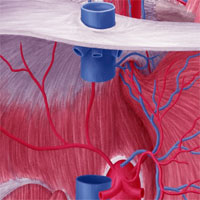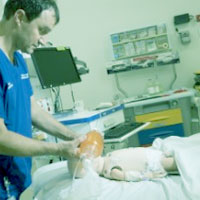Tag: sepsis

Nominate Your Sepsis Hero!
Sepsis Alliance is excited to announce Sepsis Heroes, the organization's annual fundraising gala, will be returning on September 13, 2018 in New York City. The annual event, timed to coincide with Sepsis Awareness Month,... read more

Unexplained Mortality Differences Between Septic Shock Trials
Although the definition of septic shock has been standardized, some variation in mortality rates among clinical trials is expected. Insights into the sources of heterogeneity may influence the design and interpretation of... read more

Septic Cardiomyopathy
Septic cardiomyopathy is an important contributor to organ dysfunction in sepsis. Guided treatment of septic cardiomyopathy may affect patients' prognosis, especially when their cardiac index is substantially decreased. The... read more

Isolated Left Ventricular Failure is a Predictor of Poor Outcome in Patients Receiving Veno-Arterial ECMO
Veno-arterial extracorporeal membrane oxygenation (va-ECMO) is increasingly and successfully used to assist patients with refractory cardiogenic shock from different causes. A total of 132 va-ECMO patients were enrolled.... read more

Evidence for Persistent Immune Suppression in Patients Who Develop Chronic Critical Illness After Sepsis
Many sepsis survivors develop chronic critical illness (CCI) and are assumed to be immunosuppressed, but there is limited clinical evidence to support this. We sought to determine whether the incidence of secondary infections... read more

Does Respiratory Variation Of Inferior Vena Cava Diameter Predict Fluid Responsiveness In Spontaneously Ventilating Children With Sepsis
IVC collapsibility has poor test characteristics for predicting fluid responsiveness in spontaneously ventilating children with sepsis. Thirty-nine fluid boluses were recorded in 33 children, 28/39 (72%) of which met criteria... read more

Temporal Trends in Incidence, Sepsis-Related Mortality, and Hospital-Based Acute Care After Sepsis
Owing to increasing incidence and declining mortality, the number of sepsis survivors at risk for hospital readmission rose significantly between 2010 and 2015. The 30-day hospital readmission rates for sepsis declined modestly... read more

The long sepsis journey in low- and middle-income countries begins with a first step… but on which road?
Infection and sepsis are among the most frequent acute medical conditions worldwide and result in approximately eight million premature deaths each year, most of which occur in low and lower-middle income countries (LMICs).... read more

Improving Survival Rates From Sepsis
Sepsis kills more Australians each year than breast cancer and prostate cancer combined. Daily, as many as 20,000 people worldwide are thought to die from this deadly disease. Also known as blood poisoning, sepsis is a life-threatening... read more

Survival Benefit of a Low Ratio of Visceral to Subcutaneous Adipose Tissue Depends on LDL Clearance vs. Production in Sepsis
Patients with sepsis with a high ratio of visceral adipose tissue (VAT) to subcutaneous adipose tissue (SAT) have increased mortality. Our goal was to investigate the mechanism of this effect, noting that low LDL levels are... read more

Prehospital Antibiotics Improved Some Aspects of Sepsis Care
Training EMS personnel in early recognition of sepsis improved some aspects of care within the acute care chain, but did not reduce mortality, according to results of a randomized trial. Emergency medical service (EMS) personnel... read more

Pediatric Sepsis Endotypes Among Adults With Sepsis
Recent transcriptomic studies describe two subgroups of adults with sepsis differentiated by a sepsis response signature. The implied biology and related clinical associations are comparable with recently reported pediatric... read more

Sepsis: A Threat That Needs a Global Solution
Flavia R. Machado, MD, PhD, gives a plenary talk at the 47th Critical Care Congress, “Sepsis: A Threat That Needs a Global Solution.”... read more

Research Aims to Fine-Tune Sepsis Diagnosis
Work designed to improve diagnosis of one of the leading causes of death in children is under way in Brisbane, led by a University of Queensland researcher. Mater Research Institute-UQ Associate Professor Luregn Schlapbach... read more




